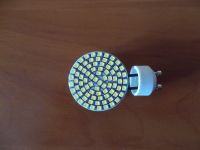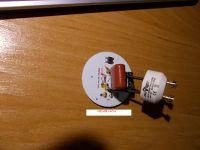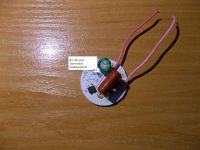szon wrote: With such a number of LEDs, it is not 12V for sure.
After all, you can see on the handle (first post) that this "bulb" is powered by the mains voltage.
The cap houses a typical transformerless power supply system.
Gwardian wrote: . The problem is to know where the voltage = 12 V should be connected.
Nowhere ... Bring the power supply system to working order (simple as the construction of a flail) and measure the voltage that goes to the diodes.
There are 80 diodes. Counting 3V per diode (The voltages may be different - depending on the type / design of the diode) we have 240V - it can be assumed that they are all connected in series.
And one more thing - the power supply used in this "light bulb" does not require a current limiting resistor (this is to some extent stabilized at the appropriate level by the circuit of the power supply itself), in case you want to connect the power supply - you MUST make sure that the current flowing from the power supply does not exceeded (depending on the diode) 20 mA per structure.







